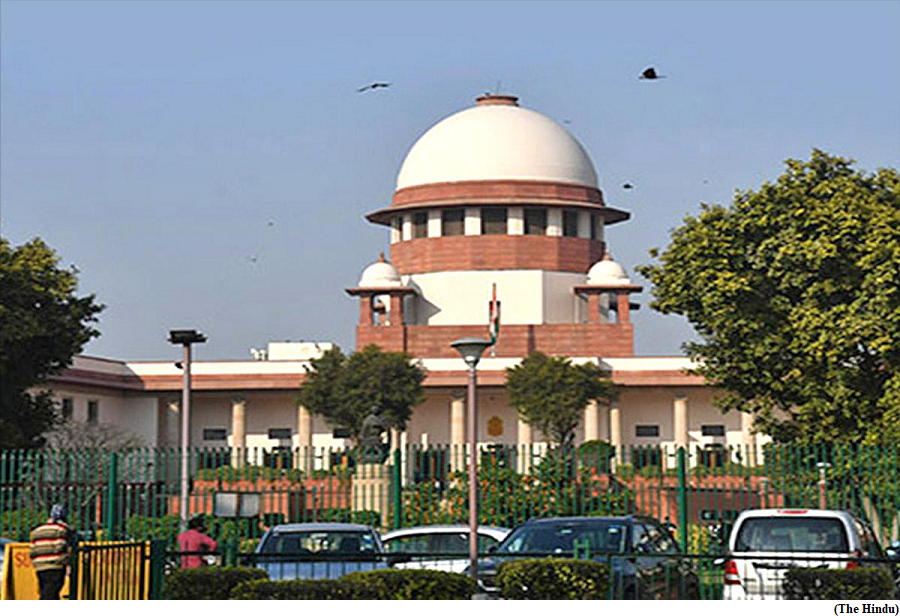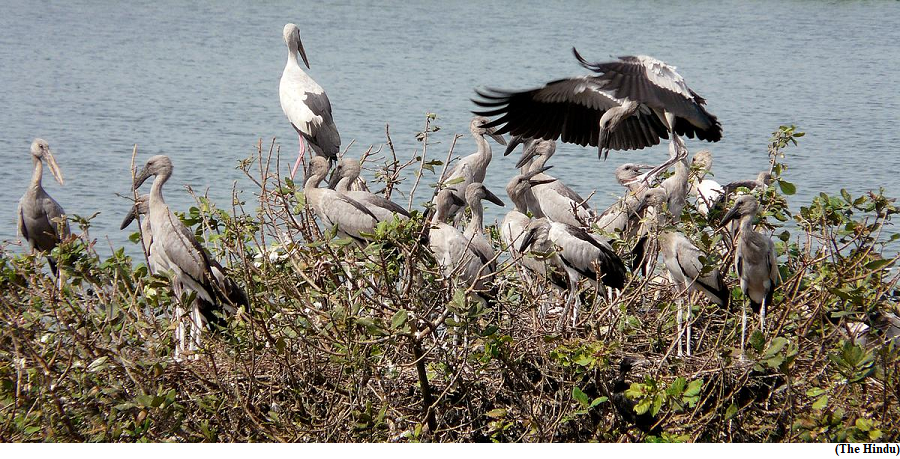What is behind China’s renaming spree? (GS paper 2, International Relation)

Why in news?
- Recently, the Chinese government announced it would “standardise” the names of 11 places in Arunachal Pradesh.
- The Ministry of Civil Affairs in Beijing published a list of 11 places along with a map showing the Indian State of Arunachal Pradesh as a part of China’s Tibet Autonomous Region.
India’s response:
- While India dismissed the renaming, which is a largely symbolic move and unlikely to have any tangible on-the-ground impact on the border dispute.
- India has underlined a hardening Chinese stance on the boundary, the dim prospects of any meaningful progress in the long-running talks, as well as the current strained relations between the neighbours.
What are the places on the list?
- The Chinese Ministry of Civil Affairs notification announced 11 “place names for public use”, in Mandarin, Tibetan and English. These include five mountain peaks, two more populated areas, two land areas and two rivers. All of the 11 sites are on Indian territory, and the southernmost is close to Itanagar.
- The Chinese government referred to the location of the sites as “Zangnan”, or “south Tibet”, which is how it refers to Arunachal Pradesh. China claims as much as 90,000 sq km in the eastern sector of the India-China boundary, covering the entire State.
Is this the first such renaming attempt?
- This is the third time China is issuing names for places in Arunachal Pradesh, a gesture seen as provocative by India and one that has coincided with periods of strains in relations.
- In 2017, the first list of “standardised” names was issued for six places in Arunachal, which was then seen as a retaliatory move after the Tibetan spiritual leader, the Dalai Lama, visited the State.
- The second such list was issued in December 2021, more than a year into the crisis sparked by China’s multiple transgressions across the Line of Actual Control (LAC) starting in April 2020. The second list had 15 places, including eight towns, four mountains, two rivers and the Sela mountain pass.
- The border law, which took effect on January 1, 2022, contains 62 articles covering delineation and border defence as well as immigration, border management and trade. The issuing of new names is related to Article 7, which calls for promoting border education at all levels of government.
What is behind China’s moves?
- More broadly, the moves from Beijing point to a hardening of its stand on territorial disputes, which are now seen less as matters to be resolved diplomatically and bilaterally, but as questions of China’s sovereignty.
- Besides the renaming, the new border law as well as the new regulations from the State Council all underscore how under current leader Xi Jinping, the protection of national sovereignty and territory has been mandated under various laws.
- This has also driven more activity along the borders from local-level authorities, such as stepped up programmes to build new civilian settlements (including some that have come up on territory disputed by both Bhutan and India) as well as other border infrastructure.
What will be the impact on the boundary dispute?
- Though this symbolic gesture may have little real impact on the ground, it, at the same time, also does reflect how the situation along the borders, described by India as “stable but unpredictable”, is the most concerning since the normalisation of ties between India and China in 1988, when they agreed to shelve differences and maintain peace along the boundary.
- Both sides also took tentative steps towards a permanent settlement, by appointing Special Representatives (SRs) in 2003 to find a solution to the dispute. This was, however, predicated on maintaining peace and tranquillity through a range of mechanisms set up by both sides.
- China’s 2020 transgressions have, however, left those arrangements in tatters. A large number of troops from both sides, for the first time in decades, have been stationed permanently in forward areas.
- Discussions to disengage have moved slowly, and both are yet to reach an agreement on Demchok and Depsang after having disengaged in four other friction areas.
Settlement claims:
- In the eyes of most observers, the most realistic permanent package settlement is one that would see minor adjustments along the Line of Actual Control (LAC) in both the western sector, where India sees China as occupying as much as 38,000 sq km in Aksai Chin, and in the eastern sector, where China claims as much as 90,000 sq km in Arunachal.
- Differences in the middle sector are less complex. The “swap” in the west and east tacitly suggested by then leader Deng Xiaoping in the 1980s was also along these lines.
Conclusion:
- The renaming and issuing of “standardised” names by the Chinese government has only underlined the hardening Chinese stand, which has left prospects of a settlement dimmer than ever.
Trials can be transferred only in exceptional cases: SC
(GS paper 2, Judiciary)
Why in news?
- The Supreme Court has held in a judgment that criminal cases under trial should be transferred from one State to another only in “exceptional circumstances”. Unnecessary shifting of cases would affect the morale of the State judiciary and prosecution agency.

What was the case before SC?
- A Bench led by Justice Surya Kant was recently dealing with the murder of a political worker, Kurban Sha, in Purba Medinipur, West Bengal.
- Sha was shot dead by goons in 2019. The family of Sha had approached the top court to transfer the trial to Assam. They alleged that a fair trial was not possible in West Bengal.
- The State government suddenly, in 2021, ordered the public prosecutor to withdraw the prosecution against the accused. The Calcutta High Court pro-actively stepped in and annulled the government notification. The trial court also refused to grant bail to the accused after the victim’s family and witnesses complained of threats.
Highlights of the judgement:
- The Supreme Court commended the interventions of the judiciary, saying that “justice should not only be done, but should manifestly and undoubtedly be seen to be done”.
- Declining the plea to transfer the case out of West Bengal, the court said the power to transfer cases under Section 406 of the Code of Criminal Procedure (Cr.PC) should be used sparingly and only when justice was apparently in grave peril.
Situations in which an ongoing trial could be transferred:
- The judgment summarised a catena of apex court verdicts giving the possible situations in which an ongoing trial could be transferred.
- These include
- when the State or prosecution is acting hand in glove with the accused;
- when there is material to show that the accused may influence the prosecution witnesses or cause physical harm to the complainant;
- when comparative inconvenience and hardships are likely to be caused to the accused;
- when there is a communally surcharged atmosphere indicating some proof of inability of holding fair and impartial trial because of the accusations made and the nature of the crime committed by the accused;
- existence of some material from which it can be inferred that some persons are so hostile that they are interfering or are likely to interfere either directly or indirectly with the course of justice.
- The convenience of parties and witnesses as well as the language spoken by them could also act as a relevant factor when deciding a transfer petition, the court said.
- Besides the pro-active exercises, the Bench said transferring the current case would present logistical issues. More than 90 witnesses, most of whom are Bengalis, are yet to be examined.
Pelicans, mangroves, and salt marshes
(GS paper 3, Environment)
Context:
- The Island of Sriharikota serves as a barrier that shields a brackish water lagoon, the Pulicat Lake.
- Being mostly off-limits to tourists because it is an ISRO launch site, this area is teeming with 76 species of water birds. The lake itself has an average depth of only one metre, although it is nearly 60 km long.

Spot-billed pelican:
- The tidal flats and both fresh and brackish water wetlands found here are ideal for the spot-billed pelican.
- Although classified as ‘Near-Threatened’ in the IUCN red list, this bird looms large in our minds when we think of water birds.
Characteristics:
- The spot-billed pelican’s comical walk points to weak leg muscles, which also means that the bird is not a great swimmer, and catches fish near the surface of the water. The common name comes from blue spots on the sides of the large bills.
- A social bird, this species sometimes goes fishing in groups, forming a semi-circle that pushes the fish towards shallow water. It also forms a foraging partnership with the little cormorant.
- Cormorants are divers, and their dives cause the fish present in deeper regions to scatter towards the surface, where the pelican awaits them.
- Adult spot-billed pelicans weigh 4.5-5 kg. The pouch, which is called the gular, is for catching fish. In the breeding season, the adult may bring home 2 kg of fish in one catch.
Breeding colonies:
- Spot-billed pelicans form stable colonies along with other water birds. Nests are built on trees, and two-three eggs are laid. When they are about a month old, the chicks destroy the nests.
- Breeding colonies occur very close to, or even within villages, and the birds do not seem perturbed by human activity, and the villagers welcome and protect the pelicans and the nests.
- Villagers use the droppings of the spot-billed pelican as a fertilizer. After the breeding season, pelican populations scatter over a very large area as they forage for food.
Breeding sites:
- A detailed survey of spot-billed pelican populations placed a crude estimate of their number in India at 6,000-7,000.
- The survey identified breeding sites for these birds in South India at Karaivetti-Vettangudi near Thanjavur and Koonthankulam near Tirunelveli in Tamil Nadu, Kokkarebellur (Mandya District) and Karanji Lake (Mysuru city) in Karnataka, and Uppalapadu near Guntur and Nelapattu near the Pulicat lake in Andhra Pradesh.
- Andhra Pradesh has recently lost a large breeding colony of the bird at the Kolleru lake, where aquaculture has contributed to a total degradation of the ecosystem.
Pulicat lake:
- The Pulicat lake, now a salty marsh, was a thick mangrove forest in the 16th century.
- Wetland ecosystems lock up carbon dioxide from the atmosphere, as ‘Blue Carbon’. As carbon sinks, mangroves can store 1,000 tonne of carbon per hectare.
Ramsar sites:
- Wetlands of global importance are called Ramsar sites, after the city in Iran where the Treaty on Wetlands was signed.
- India has 75 Ramsar sites, of which 14 are in Tamil Nadu, including three added in 2022: the Karikili bird sanctuary, the Pallikaranai Marsh Reserve Forest and the Pichavaram mangrove. The spot-billed pelican is seen in all these places.




